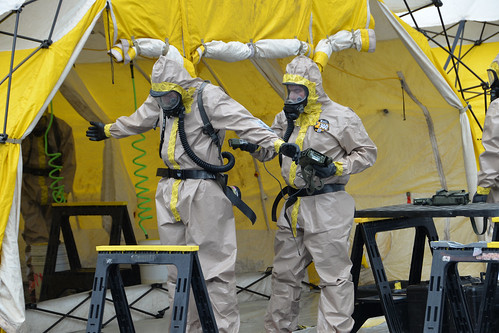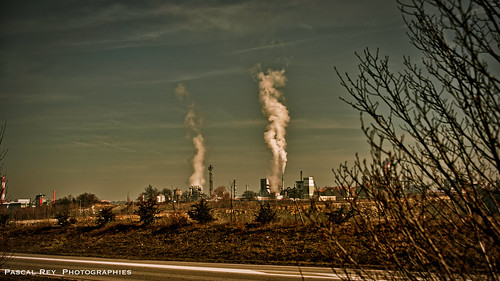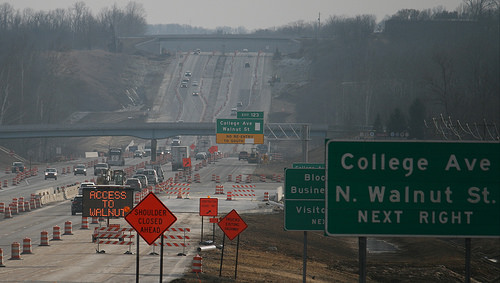I’ve written numerous times in this space about specific efforts by the Trump administration to reduce environmental regulation and enforcement. A new study from the University of Michigan Law School quantifies reductions in the administration’s criminal enforcement levels. The report is part of the school’s “Environmental Crimes Project,” and includes the first two years of the Trump Administration as the latest in a 14-year series of federal environmental enforcement data. Readers should note that federal criminal environmental enforcement is brought by the US Department of Justice (DOJ) on behalf of the US Environmental Protection Agency (EPA); EPA and delegated state agencies bring their own civil cases, and most state criminal enforcement is brought by state prosecutors on behalf of state regulatory agencies (I summarized agency enforcement in the first year of the Trump administration HERE).
Read MoreAudit, Compliance and Risk Blog
Study compares environmental enforcement during Trump administration with predecessors
Posted by Jon Elliott on Wed, Oct 28, 2020
Tags: OSHA, EPA, RCRA, CAA, DOJ, CWA, Environment, ESA, SWMA
In 1987, California adopted the Air Toxics “Hot Spots” Information and Assessment Act, responding to increasing concern over toxics in the air (AB 2588 (Connelly, Sterling)). This law complements California’s enforcement of national requirements governing stationary source emissions of air toxics. The federal Clean Air Act (CAA) required the U.S. Environmental Protection Agency (EPA) to establish and maintain a list of air toxics, named as Hazardous Air Pollutants (HAPs), and to set emissions standards (National Emissions Standards for Hazardous Air Pollutants (NESHAPs) for many HAP emission sources; California incorporates HAP/NESHAP requirements into the state’s Toxic Air Contaminant (TAC) / Airborne Toxic Control Measure (ATCM) program. (I discussed these requirements HERE).
Read More
Tags: OSHA, CAA, Cal/OSHA, California, Air Toxics, NESHAPs, TAC, ATCM, Hot Spots Act, OEHHA, BAAQMD, HAPs, ARB
The federal Clean Air Act (CAA) requires the U.S. Environmental Protection Agency (EPA) to establish and maintain a list of air toxics, named as Hazardous Air Pollutants (HAPs), and to set emissions standards for many sources of such pollutants. HAPs include heavy metals, organics, and other airborne pollutants that are not otherwise regulated as “criteria” air pollutants (such as carbon monoxide, particulate matter, and ground level ozone). This note summarizes requirements applicable to stationary sources.
Read MoreNew EPA Policy Redefines “Ambient” Air on Stationary Source Sites
Posted by Jon Elliott on Tue, Jan 28, 2020
Although a major focus of the Clean Air Act (CAA) is the definition, attainment and maintenance of national ambient air quality standards (NAAQSs), the statute doesn’t define the term “ambient air.” This gap leaves the Environmental Protection Agency (EPA) to develop regulatory and policy definitions that delimit the reach of CAA authority. Since 1971, EPA’s definition defines “ambient air” as “that portion of the atmosphere, external to buildings, to which the general public has access.” EPA also provides additional details in a series of policy documents, which have just been updated with a memorandum from EPA Administrator Wheeler to expand the exclusions for onsite air.
Read MoreTags: Business & Legal, Environmental risks, Environmental, EPA, CAA
Chemical Safety Board Proposes Accident Reporting Regulations
Posted by Jon Elliott on Tue, Jan 14, 2020
The federal Chemical Safety and Hazard Investigation Board – which usually refers to itself as the Chemical Safety Board or CSB – began operations in 1998. CSB conducts independent investigations of major chemical accidents, issues accident-specific findings, and offers specific or general recommendations for improved chemical handling and regulation (I wrote about one set of proposals here). Since its authorization in the 1990 Clean Air Act (CAA) Amendments, CSB has also had authority to establish chemical accident reporting regulations.
Read MoreTags: Environmental risks, Environmental, Hazcom, RCRA, CAA, CSB
EPA Completes Re-Revisions to Accidental Release Prevention Rules
Posted by Jon Elliott on Mon, Dec 23, 2019
On November 20, 2019, the Environmental Protection Agency (EPA) completed its latest review and revisions to the Accidental Release Prevention (ARP) program for toxic catastrophe prevention under the Clean Air Act (CAA). These changes complete the Trump Administration’s review and repeal of most changes enacted during the Obama Administration, returning ARP requirements to roughly the point they were at before 2016. The remainder of this note summarizes these changes.
Read MoreTags: Business & Legal, Environmental risks, Environmental, EPA, Hazcom, CAA
Chemical Safety Board To Work on Accident Reporting Regulations
Posted by Jon Elliott on Tue, Oct 01, 2019
Among nearly one thousand pages of expansions to Clean Air Act (CAA) requirements, the 1990 CAA Amendments legislation provided for the creation of a national agency to conduct independent investigations of major chemical accidents, to issue accident-specific findings and specific or general recommendations for improved chemical handling and regulation, and to establish chemical accident reporting regulations. This agency’s formal name is the Chemical Safety and Hazard Investigation Board – which usually refers to itself as the Chemical Safety Board or CSB. CSB was finally funded and began work in federal Fiscal Year (FY) 1997-1998.
Read MoreTags: Health & Safety, Environmental risks, Environmental, Hazcom, CAA, CSB
DC Circuit Upholds Most of EPA’s 2015 Standards For Ground Level Ozone
Posted by Jon Elliott on Tue, Sep 17, 2019
On August 23, the federal Court of Appeals for the District of Columbia (DC Circuit) upheld most aspects of the National Ambient Air Quality Standards (NAAQS) for ground level ozone adopted by the Environmental Protection Agency (EPA) in 2015. The Clean Air Act (CAA) requires EPA to create a list of air pollutants based on emissions that cause or contribute to air pollution that may reasonably be anticipated to endanger public health or welfare (criteria pollutants), to establish NAAQS based on these criteria, and to review the NAAQS every 5 years.
Read MoreTags: Business & Legal, Health & Safety, Environmental risks, Environmental, EPA, Greenhouse Gas, ghg, CAA
The Environmental Protection Agency (EPA) has completed a long review, and reaffirmed the primary National Ambient Air Quality Standard (NAAQS) for oxides of sulfur (SOX; usually measured as sulfur dioxide (SO2)). This is the first review of the primary SOX NAAQs since 2010 (primary standard – EPA did not review the secondary SOX NAAQS established in 2012).
Read MoreTags: Environmental risks, Environmental, EPA, Greenhouse Gas, ghg, SOX, CAA
Feds Formally Propose to Roll Back Future Auto Emission Standards
Posted by Jon Elliott on Tue, Aug 21, 2018
 The Trump Administration has taken the next step toward rolling back automobile standards intended to reduce greenhouse gas (GHG) emissions. On August 2, the Environmental Protection Agency (EPA) and the National Highway Traffic Safety Administration (NHTSA) issued a joint proposal to replace emission standards previously adopted to tighten emission standards during model years 2021-2026, captioned the “Safer Affordable Fuel-Efficient (SAFE) Vehicles Rule for Model Years 2021-2026 Passenger Cars and Light Trucks.” The agencies present a formal proposal to extend existing emission standards through those years, but also seek comments on several variations on this proposal.
The Trump Administration has taken the next step toward rolling back automobile standards intended to reduce greenhouse gas (GHG) emissions. On August 2, the Environmental Protection Agency (EPA) and the National Highway Traffic Safety Administration (NHTSA) issued a joint proposal to replace emission standards previously adopted to tighten emission standards during model years 2021-2026, captioned the “Safer Affordable Fuel-Efficient (SAFE) Vehicles Rule for Model Years 2021-2026 Passenger Cars and Light Trucks.” The agencies present a formal proposal to extend existing emission standards through those years, but also seek comments on several variations on this proposal.
Tags: Environmental risks, Environmental, EHS, EPA, Greenhouse Gas, ghg, CAA, Transportation

.jpg)







